A: Writing an observation for child learning development can feel tricky at first, but once you get the hang of it, it becomes much easier! The key is to focus on what you see and hear, rather than interpreting how the child might feel. Here are some steps to help you improve:
1. Be Objective
-
Write down exactly what the child is doing or saying.
-
Avoid assumptions about their emotions or intentions.
-
Example: Instead of saying "The child was happy playing with blocks," say "The child stacked five blocks and clapped their hands after completing the tower."
2. Use Clear and Specific Language
-
Describe actions in detail.
-
Example: "The child picked up a red crayon and drew a circle on the paper."
3. Link to Learning Development
-
Connect observations to developmental milestones.
-
Example: "The child demonstrated fine motor skills by grasping a pencil and drawing shapes."
4. Choose the Right Observation Method
-
Anecdotal Records: Short, detailed notes about specific moments.
-
Running Records: Continuous notes on a child’s activity over a set period.
-
Checklists: Predefined criteria to track development.
5. Reflect and Plan
-
After observing, think about what the child might need next.
-
Example: "The child showed interest in puzzles. Introducing more complex puzzles could support problem-solving skills."
Sample
1. Basic Information
- Date: [Insert Date]
- Child’s Name: [First Name or Initials]
- Age: [Child's Age]
- Observation Setting: [Where did the observation take place? Example: Classroom, Playground, Home]
2. Objective Observation
- Describe exactly what the child is doing in a factual, neutral way.
- Example: “The child picked up a red crayon and began coloring within the lines of a pre-drawn shape. They carefully held the crayon with a three-finger grasp, occasionally switching colors.”
3. Developmental Interpretation
-
Connect the child’s behavior to areas of development. Here’s how:
- Cognitive Development: Does the child solve problems or make decisions?
- Social & Emotional Development: How does the child interact with others?
- Physical Development: Are fine or gross motor skills being used?
- Language Development: What kind of words or communication is the child using?
Example: “The child demonstrated fine motor skills by using a precise grip while coloring. This activity supports hand-eye coordination and pencil control, preparing them for early writing skills.”
4. Linking To The EYLF
Linking your observation to the Early Years Learning Framework (EYLF) involves connecting the child's actions and behaviors to the five key learning outcomes outlined in the framework. Here's how you can do it:
EYLF Outcome 1: Children Have a Strong Sense of Identity
- Observation Example: The child confidently chose a red crayon and began coloring within the lines.
- Link: This demonstrates the child's growing independence and ability to make choices, which aligns with developing a strong sense of identity.
EYLF Outcome 2: Children Are Connected with and Contribute to Their World
- Observation Example: The child shared crayons with peers and discussed their favorite colors.
- Link: This shows the child's ability to connect with others and contribute to a shared activity, fostering social interactions and collaboration.
EYLF Outcome 3: Children Have a Strong Sense of Well-being
- Observation Example: The child clapped their hands after completing a drawing.
- Link: This reflects the child's emotional well-being and sense of achievement, supporting their confidence and self-esteem.
EYLF Outcome 4: Children Are Confident and Involved Learners
- Observation Example: The child experimented with mixing colors to create new shades.
- Link: This highlights the child's curiosity and active engagement in learning, which aligns with being a confident and involved learner.
EYLF Outcome 5: Children Are Effective Communicators
- Observation Example: The child described their drawing to a peer, using descriptive language.
- Link: This demonstrates the child's ability to communicate effectively and express their ideas.
5. Reflection & Next Steps
- Consider what the child might need next for their learning and growth.
- Example: “Introducing larger coloring spaces and different art tools could help strengthen grip and coordination. Providing opportunities for peer interaction during art activities might also support social engagement.”
Further Reading
Different Types Of Observation Methods
What Is A Jotting Observation?





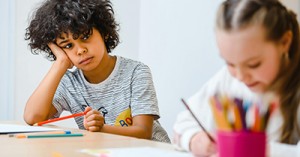
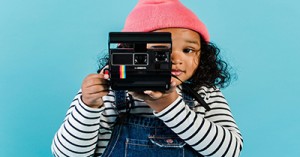
 Here is the list of the EYLF Learning Outcomes that you can use as a guide or reference for your documentation and planning. The EYLF
Here is the list of the EYLF Learning Outcomes that you can use as a guide or reference for your documentation and planning. The EYLF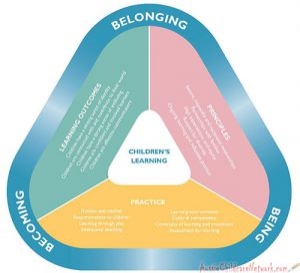 The EYLF is a guide which consists of Principles, Practices and 5 main Learning Outcomes along with each of their sub outcomes, based on identity,
The EYLF is a guide which consists of Principles, Practices and 5 main Learning Outcomes along with each of their sub outcomes, based on identity,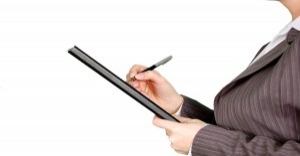 This is a guide on How to Write a Learning Story. It provides information on What Is A Learning Story, Writing A Learning Story, Sample
This is a guide on How to Write a Learning Story. It provides information on What Is A Learning Story, Writing A Learning Story, Sample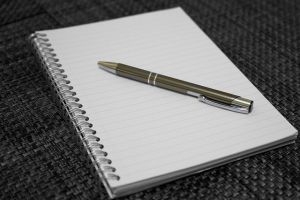 One of the most important types of documentation methods that educators needs to be familiar with are “observations”. Observations are crucial for all early childhood
One of the most important types of documentation methods that educators needs to be familiar with are “observations”. Observations are crucial for all early childhood To support children achieve learning outcomes from the EYLF Framework, the following list gives educators examples of how to promote children's learning in each individual
To support children achieve learning outcomes from the EYLF Framework, the following list gives educators examples of how to promote children's learning in each individual Reflective practice is learning from everyday situations and issues and concerns that arise which form part of our daily routine while working in an early
Reflective practice is learning from everyday situations and issues and concerns that arise which form part of our daily routine while working in an early Within Australia, Programming and Planning is reflected and supported by the Early Years Learning Framework. Educators within early childhood settings, use the EYLF to guide
Within Australia, Programming and Planning is reflected and supported by the Early Years Learning Framework. Educators within early childhood settings, use the EYLF to guide When observing children, it's important that we use a range of different observation methods from running records, learning stories to photographs and work samples. Using
When observing children, it's important that we use a range of different observation methods from running records, learning stories to photographs and work samples. Using This is a guide for educators on what to observe under each sub learning outcome from the EYLF Framework, when a child is engaged in
This is a guide for educators on what to observe under each sub learning outcome from the EYLF Framework, when a child is engaged in The Early Years Learning Framework describes the curriculum as “all the interactions, experiences, activities, routines and events, planned and unplanned, that occur in an environment
The Early Years Learning Framework describes the curriculum as “all the interactions, experiences, activities, routines and events, planned and unplanned, that occur in an environment


